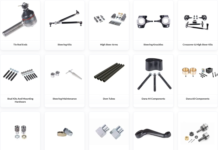Implementing energy-saving technologies in commercial spaces isn’t just good for the environment—it’s great for your bottom line, too. By reducing energy consumption, you can significantly cut operating costs, create a more sustainable business, and so on.
Are you a commercial space owner or a manager of a business using a commercial building? Whatever your situation is, this post is for you. The following points will discuss the different steps you can take in successfully implementing energy-saving technologies in your commercial space. Read on to learn more.
Assess your current energy usage
Before diving into new technologies, you need to understand your current energy consumption. Conduct an energy audit to identify where you’re using the most energy and where you can improve. You can hire a professional or use energy management software to track and analyze your usage patterns. This initial assessment will provide a baseline, helping you measure the impact of any changes you implement.
Make use of renewable energy
Use renewable energy for your commercial spaces and the operations housed in them.
Tap into the radiant power from the sun by installing solar panels on your commercial building’s roof. Don’t worry; there are business solar panels available that suit your commercial building’s roofing, energy consumption, and so on. Get in touch with a solar energy expert today to know more about your options.
Aside from that, depending on your industry or where your commercial space is located, you can also tap into other renewable energy sources like biomass energy, wind energy, and so on.
Upgrade to energy-efficient lighting
Switching to energy-efficient lighting is among the most effective and simplest ways to achieve lower energy usage.
Switch to LED lights because they only use up a fraction of energy and could last way longer compared to other types of lightbulbs. Additionally, consider devices like installing motion sensors and timers to make sure that lights are only turned on when needed. Daylight harvesting systems, which adjust artificial lighting based on available natural light, can further optimize your energy savings.
Invest in smart heating, ventilation, and air conditioning (HVAC) systems
Did you know that your commercial space’s HVAC unit is a major consumer of electricity? Thus, upgrading to a smart HVAC system can drastically reduce energy use.
Smart HVAC units automatically adjust temperatures based on occupancy and time of day, ensuring optimal efficiency.
Aside from the latest technology, regular HVAC upkeep helps keep your system running smoothly and uses less energy.
Install energy management systems (EMS)
Energy management systems (EMS) allow you to monitor and control energy use across your entire facility. These systems provide real-time data and analytics, helping you identify inefficiencies and make informed decisions.
With an EMS installed in your commercial space, you can automate lighting, HVAC, and other systems to optimize energy use. Moreover, integrating EMS with your building management system (BMS) can enhance overall operational efficiency, making your building smarter and more responsive to changing conditions.
Utilize natural lighting
Make full use of the natural lighting available to avoid depending too much on electric-powered artificial lighting.
Install skylights, large windows, and light shelves to bring in more daylight. Additionally, use reflective surfaces and light-colored walls to maximize the effect of a well-lit indoor space. Not only does this save your company energy, but it also fosters a more pleasant feeling and productive work environment for all.
Opt for energy-efficient appliances and equipment
When it’s time to replace or upgrade commercial appliances and equipment, choose energy-efficient models.
Why? Energy-efficient appliances use less power and often come with advanced features that improve performance and reduce waste. From office equipment to kitchen appliances in break rooms, every energy-efficient choice contributes to significant savings over time.
When purchasing energy-efficient appliances and equipment for your commercial space, make sure that you check their labels to see if they pass energy-efficiency certifications and tests.
Utilize energy-efficient ventilation
Upgrading your windows and insulation can significantly reduce energy loss.
Energy-efficient windows prevent excessive heat transfer. On the other hand, proper insulation ensures your HVAC system doesn’t have to operate much harder to maintain optimum indoor temperatures. Both measures help by lowering the energy consumption in your commercial space.
Leverage data analytics for continuous improvement
Utilize data analytics to continually assess and improve your energy-saving strategies. Regularly review your energy consumption data to identify trends and areas for improvement. Use predictive analytics to forecast future energy needs and adjust your strategies accordingly. By tracking your progress through the power of data, you can ensure sustained improvements over time.
Apply for energy-efficiency incentives
Financial incentives for green energy, like grants, tax breaks, and many more, are available for commercial space operators like you to take full advantage of.
Do your research to find out about the different incentives available in your area. Then, study which one fits your case so that you can take full advantage of it.
Promote energy-saving behaviors
Technology alone isn’t enough—you need to foster a culture of energy efficiency among your team. Educate team members about the importance of saving energy and provide tips on how they can contribute. Regular training sessions and reminders can help keep energy-saving practices be on top of the minds of everyone.
Additionally, encourage simple actions like turning off lights and equipment when not in use, using power strips to prevent phantom loads, and reporting any energy inefficiencies they notice.
To Conclude
Implementing energy-saving technologies in your commercial space is a smart move for both the environment and your bottom line. With these strategies, you’ll create a more sustainable, cost-effective, and forward-thinking business.






























